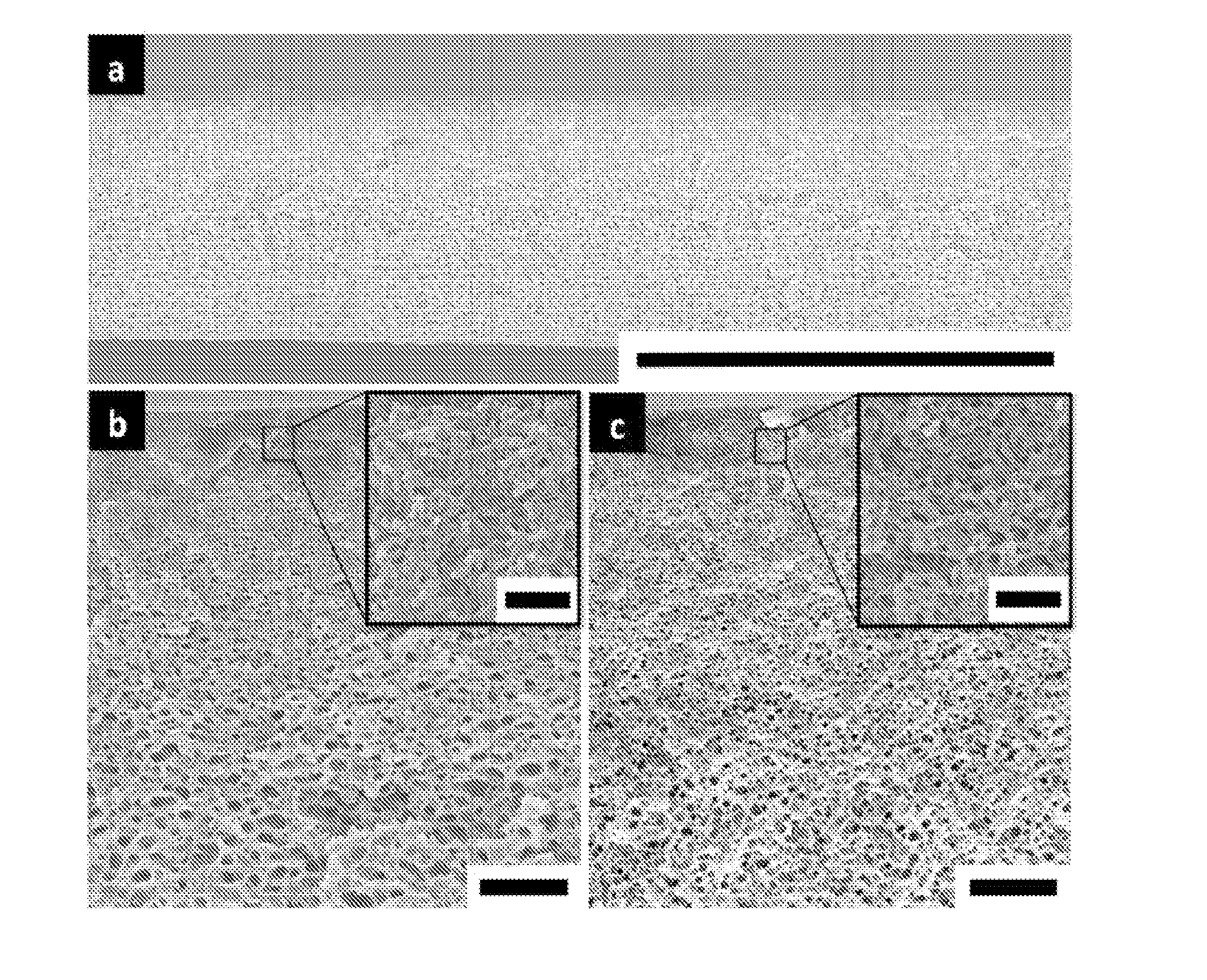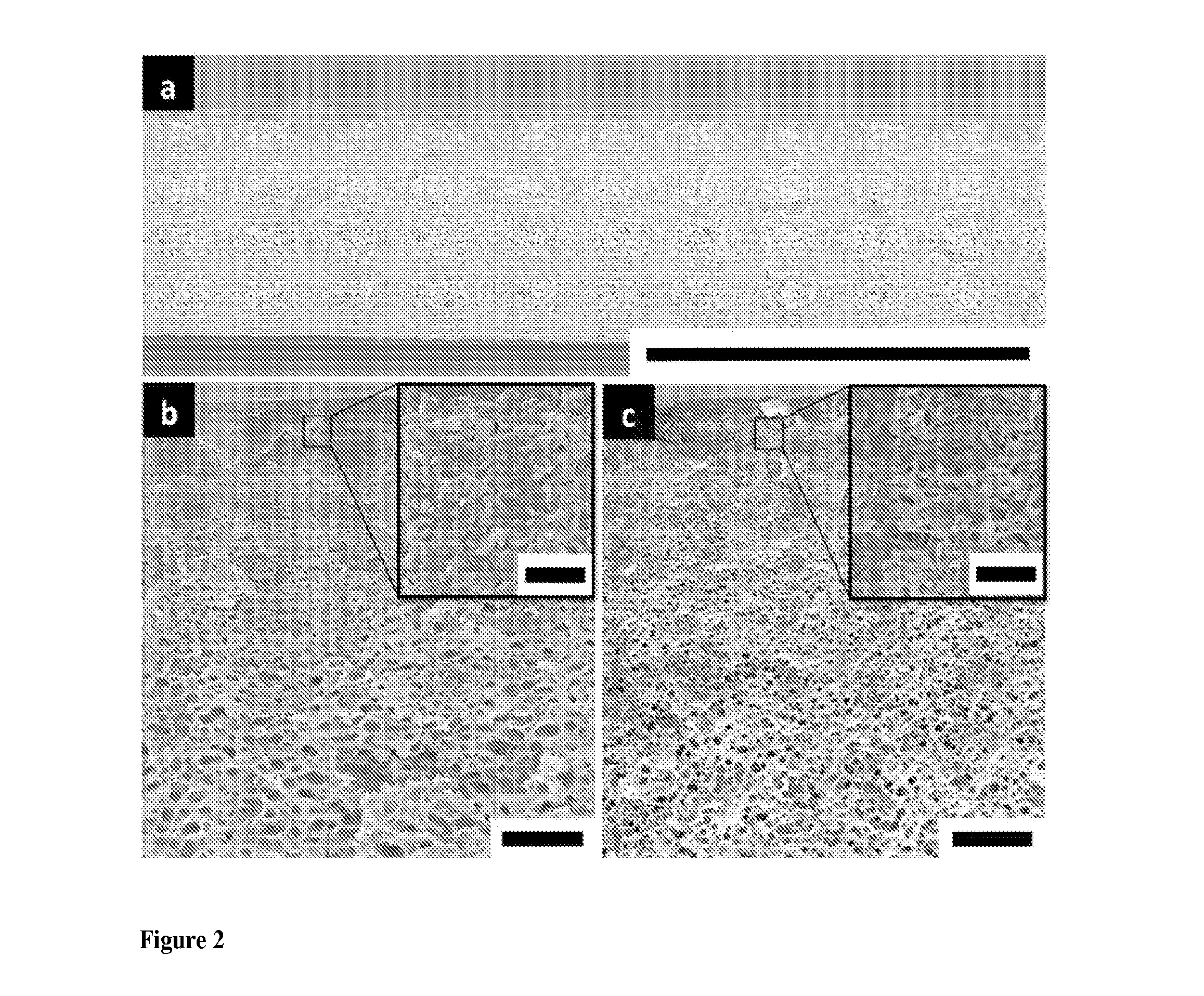Multiblock copolymer films, methods of making same, and uses thereof
a copolymer film and multi-block technology, applied in the direction of membranes, filtration separation, separation processes, etc., can solve the problems of long annealing time, low permeability of materials, and laborious transfer of fragile films
- Summary
- Abstract
- Description
- Claims
- Application Information
AI Technical Summary
Benefits of technology
Problems solved by technology
Method used
Image
Examples
example 1
[0065]A novel triblock terpolymer, poly(isoprene-b-styrene-b-4-vinylpyridine) (ISV) was synthesized by anionic polymerization as the starting material for the formation of the graded mesoporous films described herein. FIG. 1a shows the chemical structure of the terpolymer together with a table of the polymer-solvent interaction parameter, χ1-2, with different solvents used here as calculated from solubility parameters. The material used in this study, referred to as ISV-77, had a total molar mass of 76.6 kg / mol, a polydispersity of 1.16 and volume fractions of 0.29, 0.56, and 0.15 for the polyisoprene (PI), polystyrene (PS), and poly-4-vinylpyridine (P4VP) domains, respectively. FIG. 1b shows both a small angle x ray scattering (SAXS) trace and a transmission electron microscopy (TEM) micrograph of a bulk ISV-77 film cast from chloroform, both of which are consistent with a hexagonally close packed cylinder morphology where P4VP forms the cylinder cores. In order to get an impressio...
example 2
[0089]Examples of terpolymers used in the present invention. These terpolymers were prepared by the methods described in Example 1 Films were prepared using these terpolymers according to the methods described in Example 1.
TABLE 2Examples of terpolymers of the present invention.Molar MassPI volumePS volumeP4VP volume(g / mol)fractionfractionfractionPDIISV176.60.290.570.141.16ISV2430.270.550.181.02ISV358.90.270.550.181.14ISV493.50.260.420.321.1ISV5A870.230.450.321.11ISV5B74.90.270.510.221.09ISV5C58.90.330.630.041.09ISV690.80.130.550.321.2ISV787.60.140.580.281.11ISV8163.70.270.640.091.2ISV9166.80.30.580.121.26ISV10148.30.30.580.121.32ISV111150.290.580.131.12ISV1292.60.30.610.091.14ISV1384.70.30.550.151.21ISV1457.50.280.550.171.14ISV1573.50.430.430.14ISV1637.50.350.40.25ISV1743.60.260.50.24
example 3
[0090]Example of diblock copolymer films of present invention. Films were prepared as described in Example 1. The films were deposited using a single solvent. Data for the films is shown in FIGS. 7-8.
PUM
| Property | Measurement | Unit |
|---|---|---|
| size | aaaaa | aaaaa |
| thickness | aaaaa | aaaaa |
| size | aaaaa | aaaaa |
Abstract
Description
Claims
Application Information
 Login to View More
Login to View More - R&D
- Intellectual Property
- Life Sciences
- Materials
- Tech Scout
- Unparalleled Data Quality
- Higher Quality Content
- 60% Fewer Hallucinations
Browse by: Latest US Patents, China's latest patents, Technical Efficacy Thesaurus, Application Domain, Technology Topic, Popular Technical Reports.
© 2025 PatSnap. All rights reserved.Legal|Privacy policy|Modern Slavery Act Transparency Statement|Sitemap|About US| Contact US: help@patsnap.com



